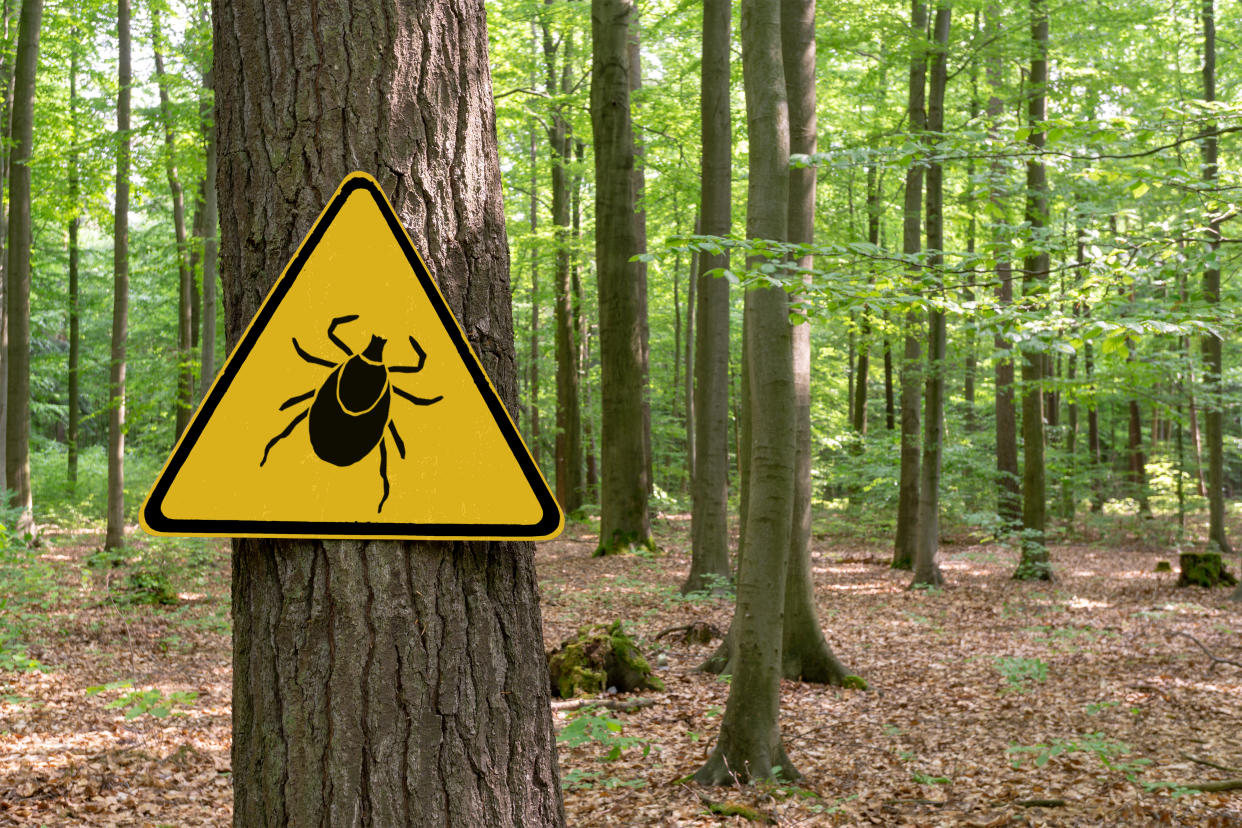Lyme disease or coronavirus? Here’s how to tell the two apart

Although Lyme disease and COVID-19 are very different diseases, a few of the symptoms are similar — and with concerns that lockdowns could increase cases of the tick-borne illness, experts say it’s critical to know the difference.
The most common symptom of Lyme disease is a telltale skin rash in the shape of a bullseye called erythema migrans, which happens in up to 80 percent of cases. But other signs of Lyme disease — which is diagnosed in an estimated 300,000 adults each year, according to the Centers for Disease Control and Prevention (CDC) — include flu-like symptoms such as fever, chills, headache, fatigue, and muscle and joint aches, as well as swollen lymph nodes.
“Lyme, like other tick-borne diseases, is associated with general flu-like symptoms, [such as] fever, head and body ache, and fatigue,” Jory Brinkerhoff, PhD, an associate professor of biology at the University of Richmond, told Healthline. “These are also symptoms of COVID-19.”
Dr. Paul Auwaerter, clinical director of the division of infectious diseases and professor of medicine at Johns Hopkins Medicine, tells Yahoo Life that “early on it can be confusing” with the two viruses.
But the flu-like symptoms are where the similarities end. “They’re very different pathogens,” Dr. Dean Winslow, an infectious disease physician at Stanford Health Care, tells Yahoo Life. Unlike Lyme disease, the coronavirus is a contagious respiratory illness that can cause shortness of breath, coughing, loss of taste and smell, nausea or vomiting, or diarrhea.
In contrast, Lyme disease is transmitted through a bite from an infected black-legged tick, which is more commonly found in the Northeast and mid-Atlantic (from northeastern Virginia to Maine), north-central states (mainly in Wisconsin and Minnesota), and on the west coast (particularly northern California), according to the CDC. Peak tick season is in the spring and early summer, but you can still acquire Lyme disease in the late summer and fall, according to Auwaerter.
Not surprisingly, preventing both diseases requires different steps. For coronavirus, the CDC recommends staying six feet away from people who are not part of your household, wearing a face mask that covers your nose and mouth when in public, and washing your hands often with soap and water for 20 seconds (or using hand sanitizer with at least 60 percent alcohol). “All of us should be practicing social distancing and wearing face coverings when in public,” says Winslow.
To help prevent Lyme disease, Auwaerter recommends doing a tick check — inspecting both your clothes and full body (including your belly button) — right after spending time outdoors, including gardening in your own backyard. If you spot a tick, remove it immediately with fine-tipped tweezers, following the CDC’s instructions.
“Tick prevention is important,” adds Auwaerter. “Spraying on DEET before you go outdoors and wearing long pants. Also, taking a bath or shower after is thought to reduce the chance of Lyme disease” since it can wash off any unattached ticks. “Ticks don’t like being drowned,” he says.
“Talk to your doctor if you’re at all concerned,” suggests Winslow. “A confident doctor or clinician should be able to sort out [both diseases] pretty well.” And if you’re experiencing any of the above symptoms, contact your healthcare provider right away.
For the latest coronavirus news and updates, follow along at https://news.yahoo.com/coronavirus. According to experts, people over 60 and those who are immunocompromised continue to be the most at risk. If you have questions, please reference the CDC’s and WHO’s resource guides.
How to maintain your physical and mental health during the pandemic
Taking care of a loved one with COVID-19? Here’s how to stay healthy
Q&A with Dr. Kavita Patel: How to keep your family safe and maintain your mental health
Read more from Yahoo Life:
Why didn't summer kill the coronavirus? Experts explain what White House officials were missing
Outdoor dining, summer travel, haircuts: How experts are assessing risk during the pandemic
Want daily lifestyle and wellness news delivered to your inbox? Sign up here for Yahoo Life’s newsletter

